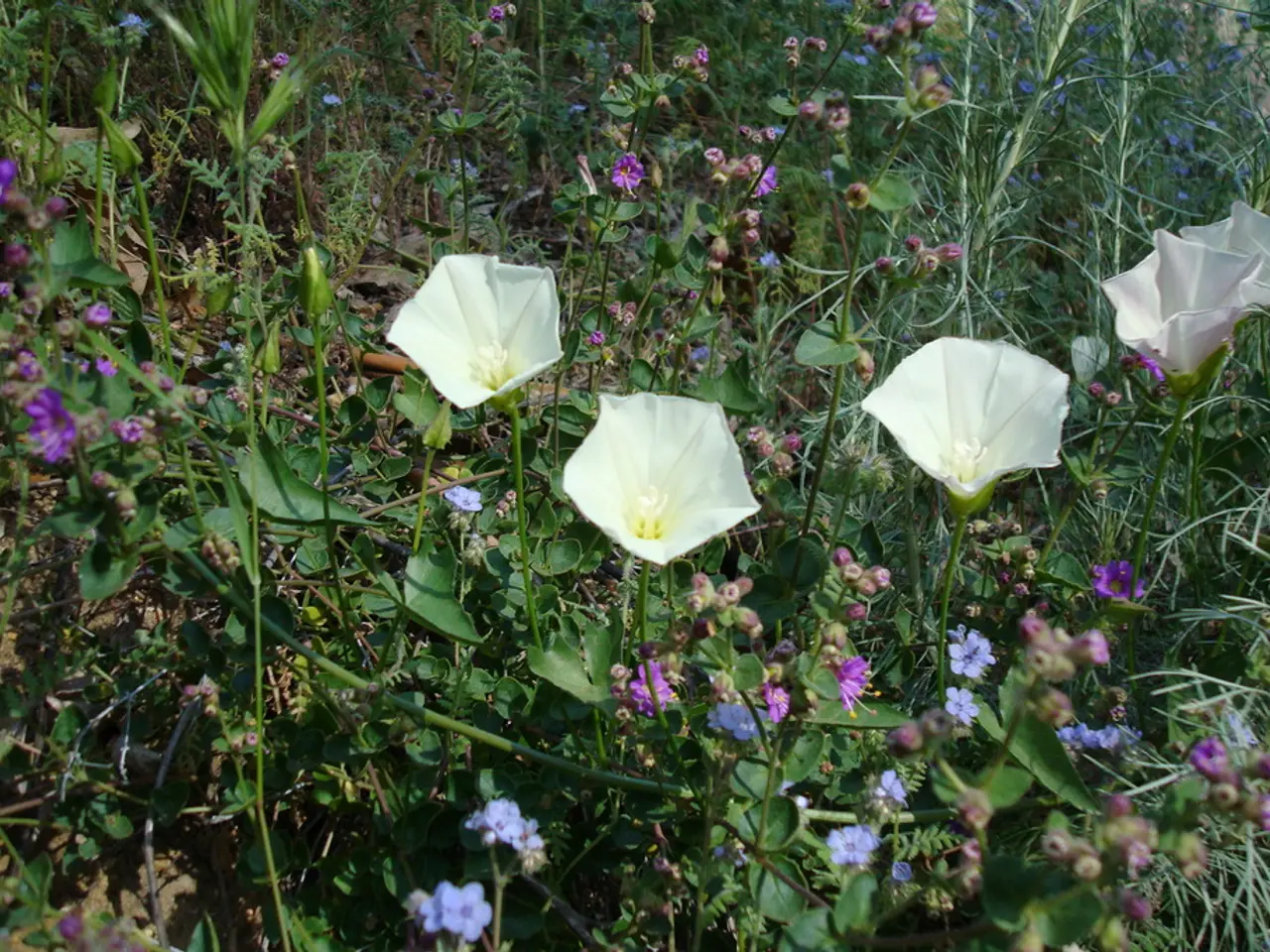Blossoming Siberian Squills: Heralds of Spring Spectacle
In the world of gardening, the Siberian squill (Scilla siberica) stands out as a tough, easy-to-grow, low-maintenance plant. Native to southwestern Russia, the Caucasus, and Turkey, this member of the asparagus family boasts a striking appearance with its nodding, bell-like, deep blue flowers. However, due to its invasive potential, it's crucial to manage its spread in gardens.
Siberian squill thrives in well-drained soil to prevent crown rot and can be grown in full sun to partial shade. Mature plants consist of 3 to 4 strap-like leaves that are approximately 6 inches long and 1⁄2 inch wide, with one or more flower stalks produced in the center of each leaf cluster. The flowers have a pleasant fragrance and are attractive to various types of bees.
Typically, Siberian squill blooms in early to mid-April in central Iowa, and the flowering normally lasts for 10 to 14 days. After flowering, small, oval seed capsules form on the plants. At maturity, the capsules turn purple, split open, and release their seeds onto the ground, contributing to its natural spread.
To prevent the invasiveness of Siberian squill, several strategies can be employed:
1. **Monitoring and Early Removal**: Regularly inspect your garden for new growth and remove any unwanted bulbs before they multiply.
2. **Preventive Planting**: Consider alternative, non-invasive ground covers that can outcompete Siberian squill.
3. **Containment**: If you still want to keep some Siberian squill, contain it by planting it in a physical barrier, such as a deep, impermeable container, to prevent it from spreading.
4. **Physical Removal**: Dig up the bulbs in the spring when they are in bloom, making sure to remove as much of the bulb as possible to prevent regrowth. Repeatedly removing new growth can help control the spread over time.
5. **Avoiding Spreading**: Avoid digging or tilling areas where Siberian squill is present, as this can spread the bulbs.
6. **Promoting Beneficial Ecosystems**: Encourage native plants and beneficial insects that can help maintain a balanced ecosystem, potentially reducing the competitive advantage of invasive species.
7. **Education and Community Action**: Educate neighbors and fellow gardeners about the invasive potential of Siberian squill to prevent its spread beyond your garden.
By implementing these strategies, you can effectively manage the spread of Siberian squill and prevent it from becoming invasive in your garden. If it establishes in unwanted areas, it can be managed by mowing during or just after flowering, digging bulbs when they emerge in spring, or smothering under a layer of black plastic or treating with a non-selective herbicide.
It's worth noting that a small number of Siberian squill cultivars are available, including 'Alba' with pure white flowers and 'Spring Beauty' with plants and flowers that are slightly larger than the species. By choosing the right cultivars and implementing effective management practices, you can enjoy the beauty of Siberian squill while keeping it under control.
To grow Siberian squill successfully, ensure well-drained soil and plant it in full sun to partial shade. The mature plants display 3 to 4 strap-like leaves and producing flower stalks in the center of each leaf cluster, which have a pleasant fragrance and attract bees.
To prevent its invasiveness, strategies include monitoring and early removal, employing alternative ground covers, containing it in physical barriers, and repeated physical removal of the bulbs. Avoiding spreading by not digging or tilling areas with Siberian squill and promoting beneficial ecosystems can also help control its growth.
Educating neighbors and fellow gardeners about the invasive potential of Siberian squill is crucial to prevent its spread beyond your garden. Interestingly, some Siberian squill cultivars are available with varieties like 'Alba' featuring pure white flowers and 'Spring Beauty' having larger plants and flowers.
By implementing the right cultivars and effective management practices, you can enjoy the beauty of Siberian squill while keeping it under control and maintaining a balanced lifestyle in your home-and-garden.




